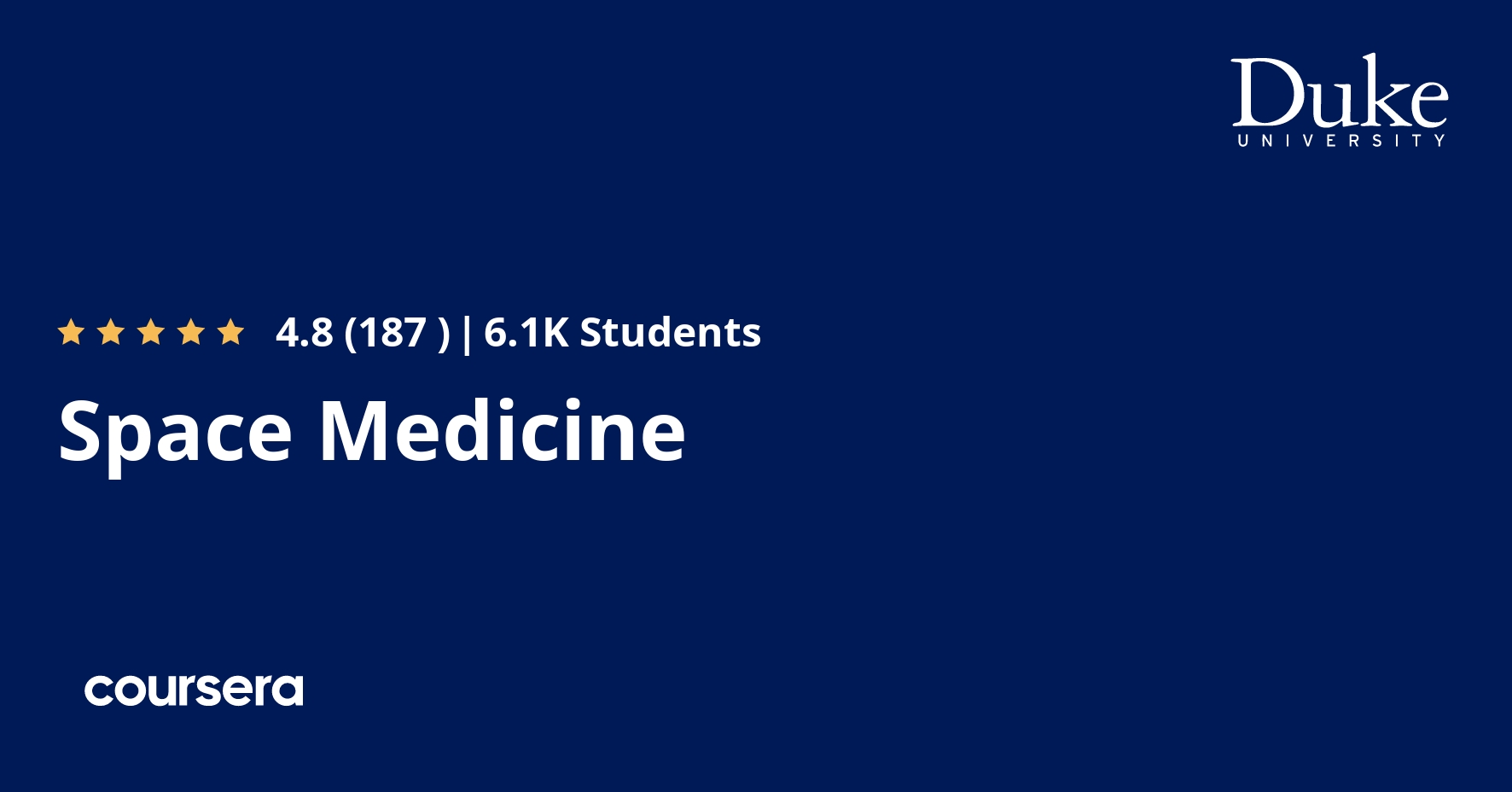Description
Have you ever wondered what it would take for humans to travel beyond the comforts of our home planet, Earth? You are invited to join us in Space Medicine – an online experience facilitated by two recent Duke graduates in which you will learn about and engage in the most pressing medical challenges facing NASA and others advancing the future of space exploration.
Space Medicine is a free, non-certificate course featuring interactive modules and weekly live discussions. Participants will reflect on questions pertinent to the future of human health in space, such as:
– How do humans respond to extreme environments?
– How can engineers, doctors, and scientific researchers come together to prevent space related health issues before they occur?
– If future generations of humans attempt to live in space, what challenges will they face?
– Which evolutionary adaptations to living on Earth are useful to surviving a months- or years-long voyage?
No prior experience in science or medicine is required, as life science concepts will be introduced as necessary. At the end of the course, you will have gained valuable experience in applying modern medicine to space-based situations, from space flight to journeying to Mars.
What you will learn
History of Medicine and Aviation
The field of space medicine arose from aerospace medicine in the mid 20th century. Owing the heritages of space and medicine, we will want to look back in history to find how these two disciplines came together. Along the way we will talk about case studies, which punctuate each week of the course, look at the role of flight medicine, before turning to the environment of space. Space is an inhospitable place, but venturing beyond Earth is not hopeless. Already some organisms have overcome problems posed by lack of air, freezing temperatures, and radiation. Space medicine is all about meeting these challenges and preventing problems before they occur in our final frontier.
Out of Thin Air
A commonly understood fact is that breathing is difficult at high elevations because of the thin air. However, the meanings behind “hard to breathe” and “thin air” are often hidden or under-appreciated. Informed by a hot balloon incident from the 1800s, we will ask why oxygen is so important for the human body and appreciate how our hearts, lungs, and blood is essential for sustaining life. Then we will look at what happens when these processes break down including medical signs and symptoms to answer what happened hundreds of years ago. Finally, we will look at countermeasures and ways that humans overcome the threat of hypoxia in aerospace and space travel.
The Price of Leaving
Scuba divers know that the end of the dive can be the most dangerous because bubbles can form causing terrible damage. Decompression Sickness was first understood in French coal miners but plays a crucial role in aerospace applications. The space environment involves moving between pressure gradients which brings these risks front and center. The other concern with different pressure gradients is hyperoxia where too much oxygen can also cause trouble. The artificial atmospheres onboard the International Space Station and in space suits must be tightly controlled to avoid these issues.
Extremes of Acceleration
Aircraft causalities almost always end with a crash. Crashes are a form of acceleration where a moving plane comes to a rapid stop causing massive trauma for the pilot and passenger. Acceleration from high speed turns, maneuvers, and lift-off can contribute to pilots passing out and losing control of their craft. We fight against these G-Forces with blood pressure in the hopes of avoiding these Losses of Consciousness and Trauma.






